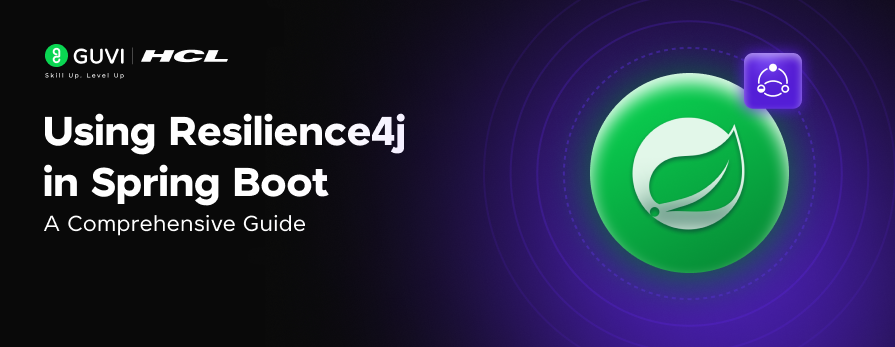
Using Resilience4j in Spring Boot: A Comprehensive Guide
Dec 31, 2024 2 Min Read 1473 Views
(Last Updated)
The world of full-stack development is so big and it consists of hundreds of libraries, tools, and frameworks. Out of all those, there is an interesting tool that helps majorly on the backend and that is, Resilience4j!
The name itself sounds unique and its use case in spring boot is enormous. Let us see more about that in this article!
Table of contents
- What is Resilience4j?
- Why Use Resilience4j?
- Setting Up Resilience4j in Spring Boot
- Add Dependencies
- Basic Configuration
- Using Annotations
- Monitoring and Observability
- Conclusion
What is Resilience4j?
Resilience4j is a powerful Java library that helps you build resilient and fault-tolerant applications by providing tools like Circuit Breaker, Rate Limiter, Retry, Bulkhead, and Time Limiter.
It’s particularly useful in microservices architectures where distributed systems are prone to failures. Integrating it with Spring Boot is relatively straightforward, thanks to its easy configuration and Spring Boot’s seamless support for such libraries.
Why Use Resilience4j?
Before diving into the implementation, let’s understand why you might want to use this specific tool in your Spring Boot application:
- Circuit Breaker: This prevents your system from repeatedly making requests to a failing service, which could lead to cascading failures.
- Rate Limiter: Controls the rate at which requests are processed, avoiding system overload.
- Retry: Automatically retries failed operations, which can recover from transient errors.
- Bulkhead: Limits the number of concurrent calls to a particular service, preventing overloading.
- Time Limiter: Ensures that calls to external services have a timeout, preventing your application from hanging indefinitely.
Setting Up Resilience4j in Spring Boot
1. Add Dependencies
First, you need to add the necessary dependencies to your pom.xml if you’re using Maven:
For Gradle, you’d include:
2. Basic Configuration
Resilience4j can be configured using properties in your application.yml or application.properties file. Below is an example configuration for a Circuit Breaker:
This configuration sets up a Circuit Breaker for myService with a sliding window of 10 calls, a failure rate threshold of 50%, and a wait duration of 10 seconds before trying to close the circuit again.
3. Using Annotations
You can use annotations provided by Resilience4j to easily apply these resilience patterns to your Spring Boot services.
- Circuit Breaker:
- Retry:
- Rate Limiter:
- Bulkhead:
Monitoring and Observability
Spring Boot provides excellent integration with Actuator, and you can expose Resilience4j metrics via the /actuator endpoints. By including the micrometer-registry-prometheus dependency, you can also monitor these metrics using Prometheus and Grafana:
Metrics like circuitbreaker_calls, circuitbreaker_state, retry_calls, etc., will be available for your monitoring tools.
In case, you want to learn more about Java libraries or spring boot frameworks, consider enrolling for GUVI’s Certified Java Full-stack Developer Course that teaches you everything from scratch and make sure you master it!
Conclusion
In conclusion, Resilience4j is a lightweight and easy-to-integrate library that provides essential fault tolerance mechanisms for microservices architectures. With minimal setup, you can protect your Spring Boot application from potential failures, making it more robust and resilient.
Whether you are dealing with unreliable networks, slow services, or system overloads, Resilience4j equips you with the right tools to handle these scenarios gracefully.
Now that you’re armed with this knowledge, you can confidently implement Resilience4j in your Spring Boot projects and build more resilient applications!































Did you enjoy this article?